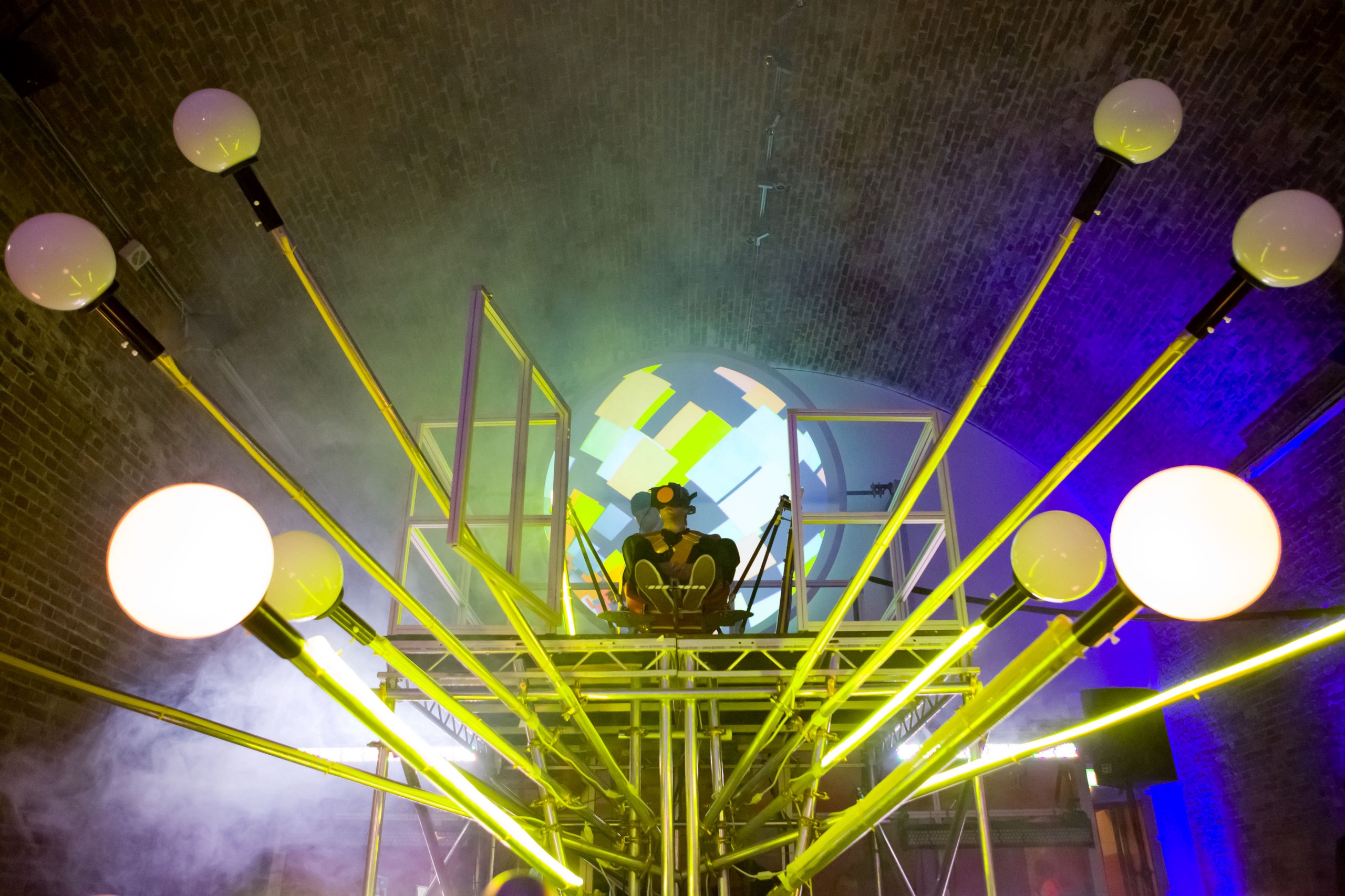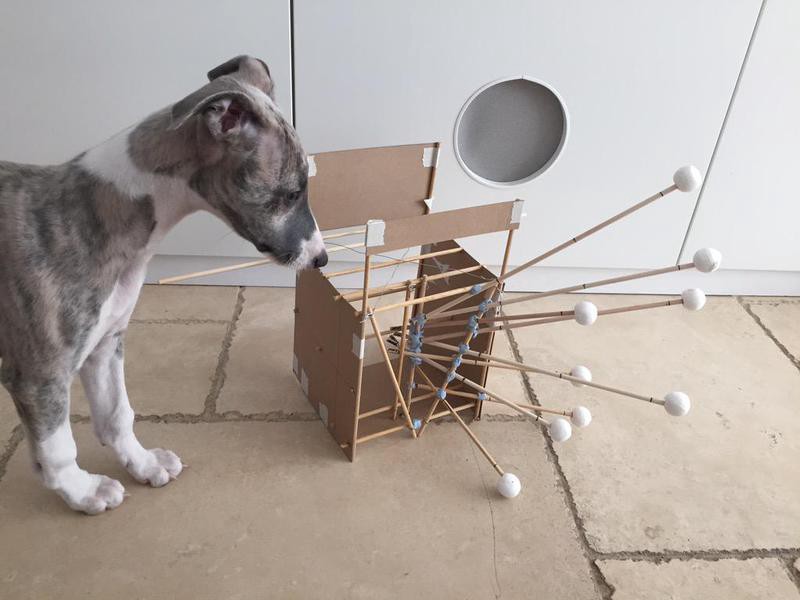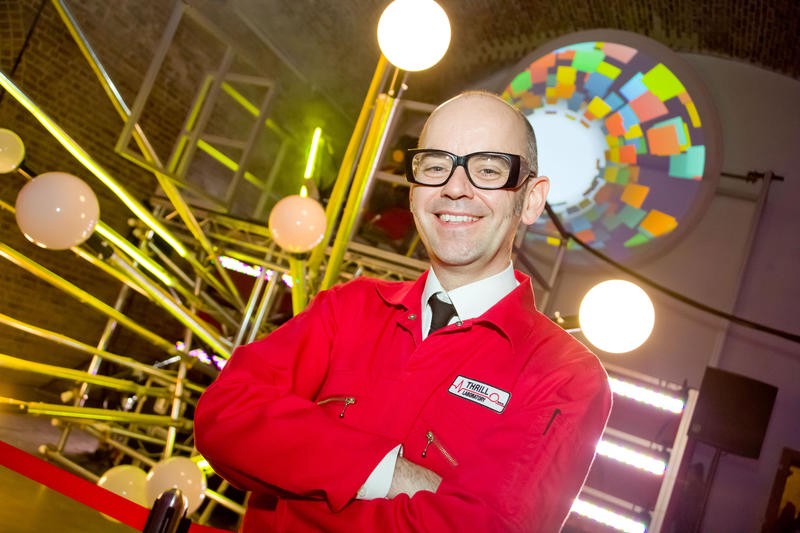
Brendan Walker describes himself as a “thrill engineer.” He’s an (actual) engineer and designer who works at the cutting edge of theme park ride-design, mixing technology, science, and a little bit of stagecraft to work out the best way to make people go, “Woah.”
He believes we’re on the cusp of a revolution in roller coasters.
“We’re getting to a limit of what our bodies can suffer in the pursuit of thrill,” Walker told me. “There’s still a few things we can do to tumble people a little bit more or with a bit more subtlety, but most of the extreme things have been done.” So now he’s hard at work on the next step–going inside people’s minds.
People at the recent FutureFest festival in London may have caught a glimpse of his first prototype, Neurosis. It looks like something out of Mad Max–a heap of scaffolding and hydraulics over six feet tall, with protruding arms covered in flashing lights. On top, a test subject is strapped in, equipped with a brain-monitoring EEG headset and a pair of Oculus Rivirtual-reality goggles.
On those goggles, and also on a screen behind the rider, a virtual world created from his or her brain waves is projected. It looks a little like a stained-glass window but twists and turns uncontrollably, while a mixture of jungle and bhangra music blares through speakers. As the experience continues, however, riders learn to take control. “They were invited to reach a level of concentration, which would change their chaotic flight into something which was a little more stable that they could appreciate,” explained Walker.
The idea is to make the experience unique every time. Walker built a tool called the Performing Data Platform that can pull in data from multiple sensors, analyze it, and then broadcast it in real time. In this case, the input was the subject’s brain waves and the outputs were a game engine, a hydraulic platform, a lighting rig, and software that was programmed to generate procedural music–but almost anything could be connected. “I suppose it’s kind of a hyper-reality that I’m trying to create,” said Walker.

The idea evolved from a concept he’d been working on with the developers behind Thorpe Park, who had just erected a new hotel. He suggested they build a hydraulic bed that gently simulates rides in the park with the objective of trying to coax the sleeper into dreaming about their experiences that day. “That ride never got made,” said Walker, but he combined work he’d been doing on brain-monitoring and a request from FutureFest to imagine what a ride might look like in 2050 to create Neurosis.
The most crucial part, said Walker, is making the experience enjoyable to a crowd of bystanders, as well as the rider. “One of the biggest problems of any virtual ride is that it’s very difficult to communicate to an audience what it’s going to do to them,” he said. “Neurosis was a response to that. Parks are social spaces. We need to be able to interact with people. We need to be able to enjoy what we’re seeing and doing with other people. We need to be able to discuss it and share it after we’ve [gotten] off the ride. If we can’t do that, then theme parks as places, as social spaces for interaction, will die.”
Walker plans to tour his creation while continuing to tweak its parameters for maximum thrill. “I think FutureFest has only shown me that there’s a much bigger audience out there,” he said. “There’s much more chin-stroking to be had. I don’t think it’s a ride I’m going to get bored with quickly!”



How We Get To Next was a magazine that explored the future of science, technology, and culture from 2014 to 2019. This article is part of our Arts & Culture section, which looks at innovations in human creativity. Click the logo to read more.
